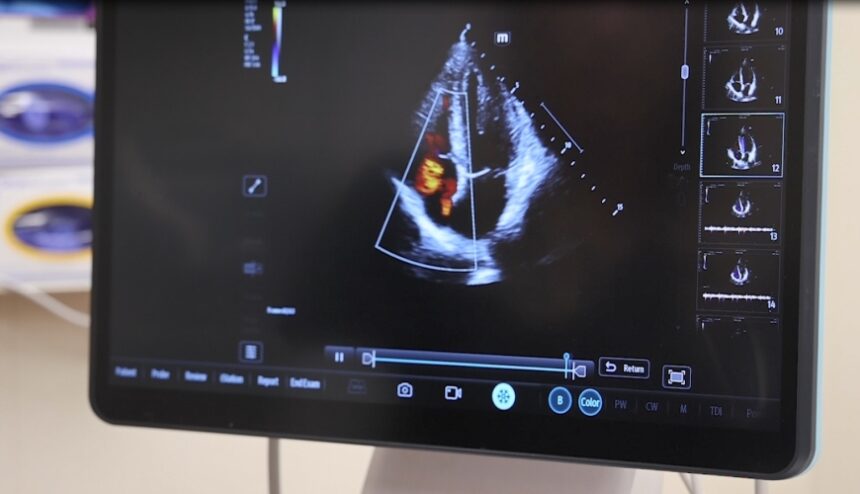“If they hadn’t done everything right, I wouldn’t be here,” Larry solemnly stated. “We thought I might have had a kidney stone, but everything looked good when he used the ultrasound to check my kidney and bladder,” said Larry. “Then he used the other one and saw the blood there. I had over a 9 cm bleed.”
Nate Tiedeman, DNP at Glacial Ridge Hospital’s Emergency Department, was working that night. Tiedeman stated, “Larry came into the ER with sudden, severe back pain. Using our newest point-of-care ultrasound, I was able to quickly identify that he had a ruptured abdominal aortic aneurysm (AAA).” He added, “Usually, these patients die quickly without rapid diagnostics; however, with the new equipment we purchased with grant money from the Helmsley Charitable Trust, we truly saved his life.”
Larry shared, “Because of the bad weather, they couldn’t get a helicopter, so they flew me on an airplane to Fargo. They immediately did a graft there, and I am happy to be here!”
Aneurysms can develop anywhere along the aorta – the largest blood vessel in the body that runs from the heart through the center of the chest and abdomen. They often grow slowly without noticeable symptoms, and many never rupture. Larry said, “When it hits [ruptures], the pain is out of this world. I have two brothers with it, and I should have had it checked earlier to see if I had one, but when you feel good, you don’t bother. One brother had an ER visit. The other one got checked out, and they found it, watched it for a while, and now he has a stent.” Larry can’t stress enough, “If you have anybody in your family with a AAA, get checked out.”
He added, “I want to say thank you very much to all of the GRHS staff for all they did, and I am very grateful.”


